When she met the young officer Napoleon Bonaparte (1769-1821), he fell madly in love with her. Until he renamed her Josephine, she was known as Rose. They married in 1796. In December 1804, in the Cathedral of Notre Dame, Paris, Napoleon crowned himself Emperor and Josephine Empress of France, in the presence of the Court and the Pope.
Unable to bear any more children, Josephine reluctantly agreed to separation and divorce. In December 1809, she moved permanently to Malmaison.
Napoleon married Marie Louise, daughter of Austrian Emperor Francis I, and a year later, in 1811, his only legitimate child was born. He was named Napoleon, designated the King of Rome. [This unfortunate young man, so greatly anticipated, died in his early 20’s.]
Napoleon, though not always faithful to Josephine, remained attached to her for the rest of his life, even through his divorce and re-marriage. After her death and before his final exile to St. Helena, Napoleon returned to Malmaison for a farewell visit.
By her first husband, Josephine was the grandmother of Napoleon III, son of her daughter. She is also an ancestress of numerous European Royals.
So far, all my pictures were taken in rooms on the ground floor of the house, all with doors opening into the gardens. Upstairs were the private chambers of Napoleon and Josephine each with their own apartments, i.e. suites of rooms.
The couple's rooms are divided by a treasury of art and artifacts they acquired.
After Josephine’s death, son Eugene lived at Malmaison; later it was sold several times before being presented as a gift to the nation of France by Daniel Iffla (known as Osiris), art enthusiast and philanthropist, whose collections can be seen in a small museum on the chateau’s grounds.



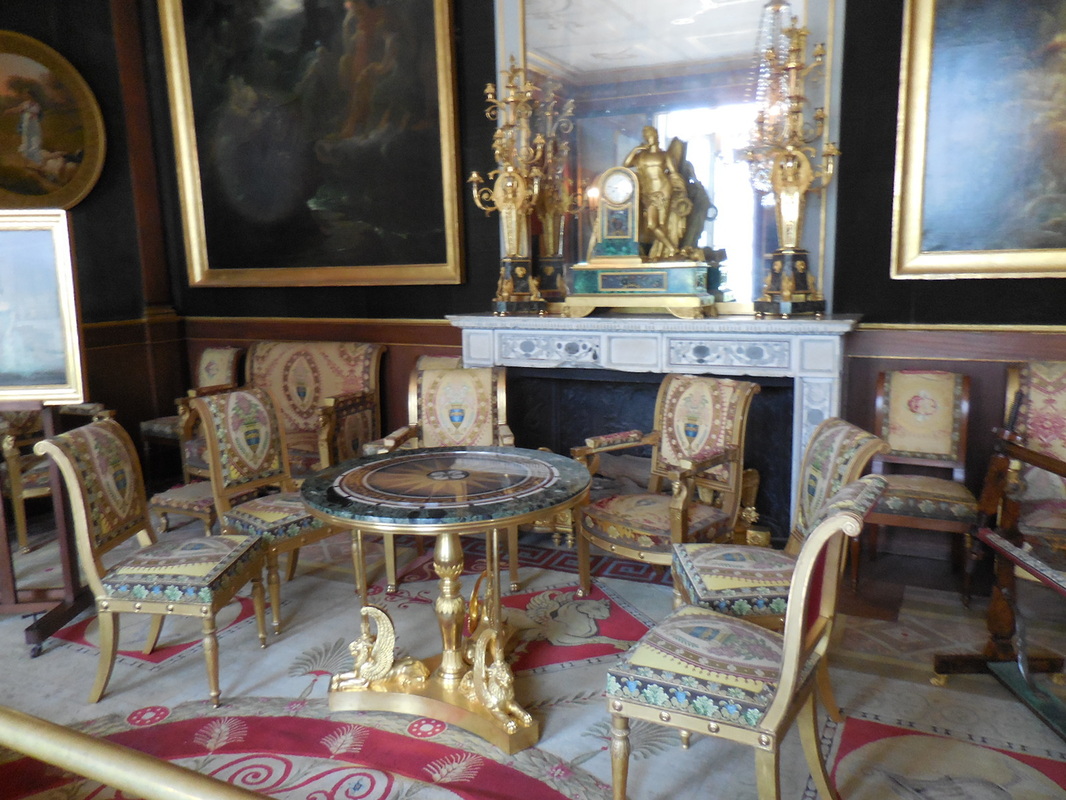
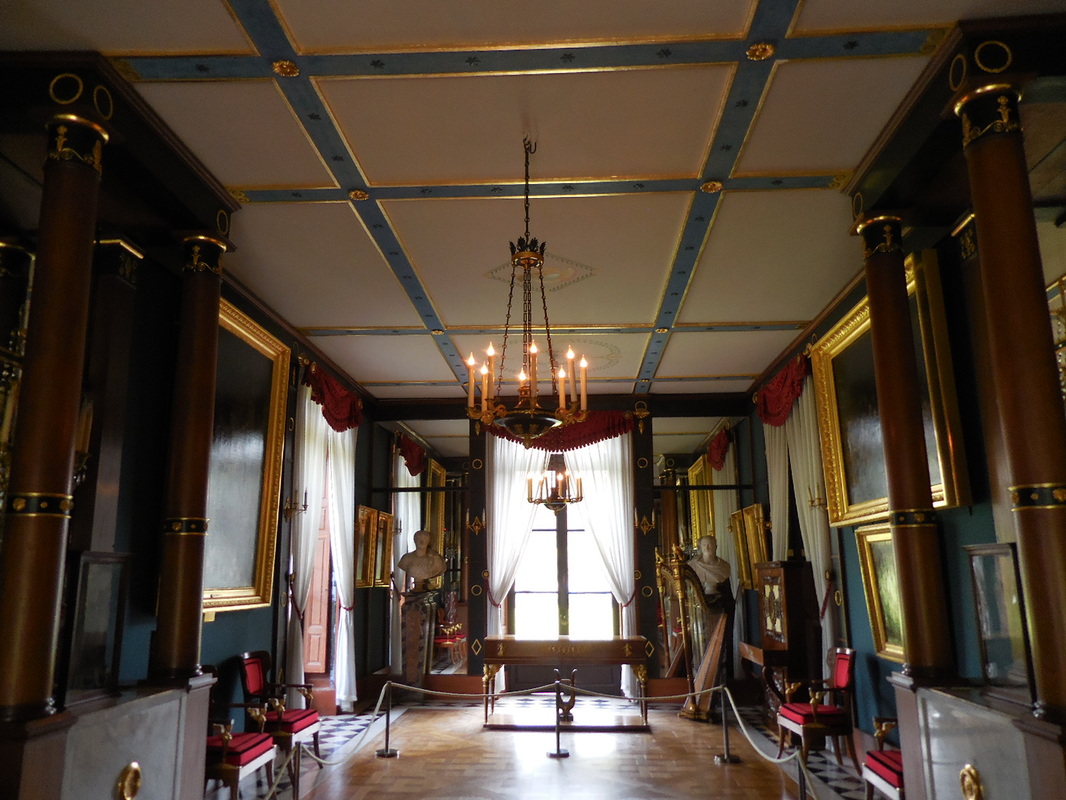
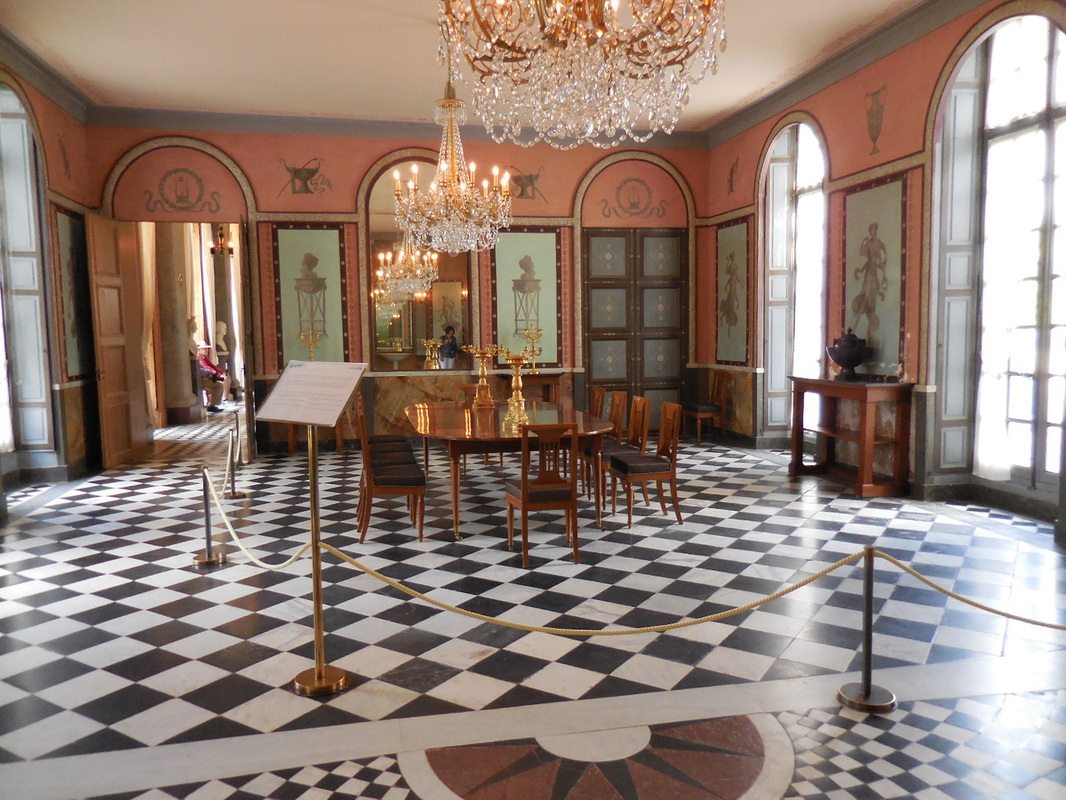
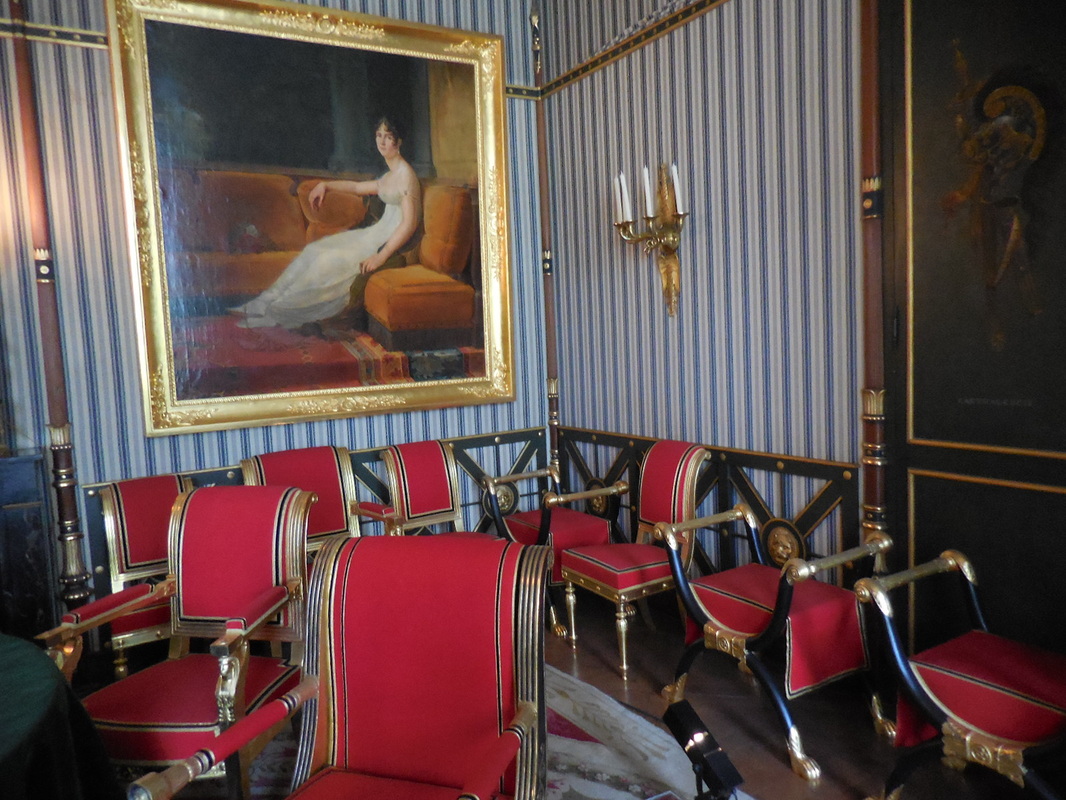


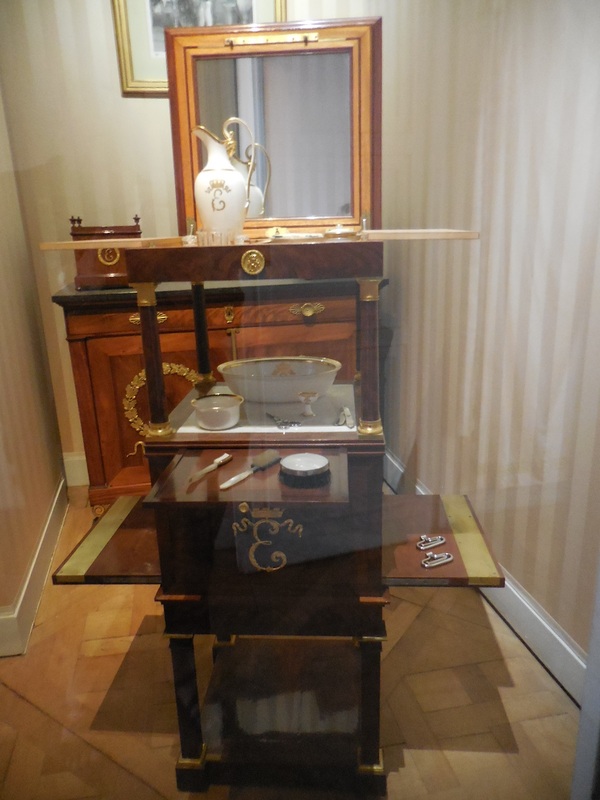
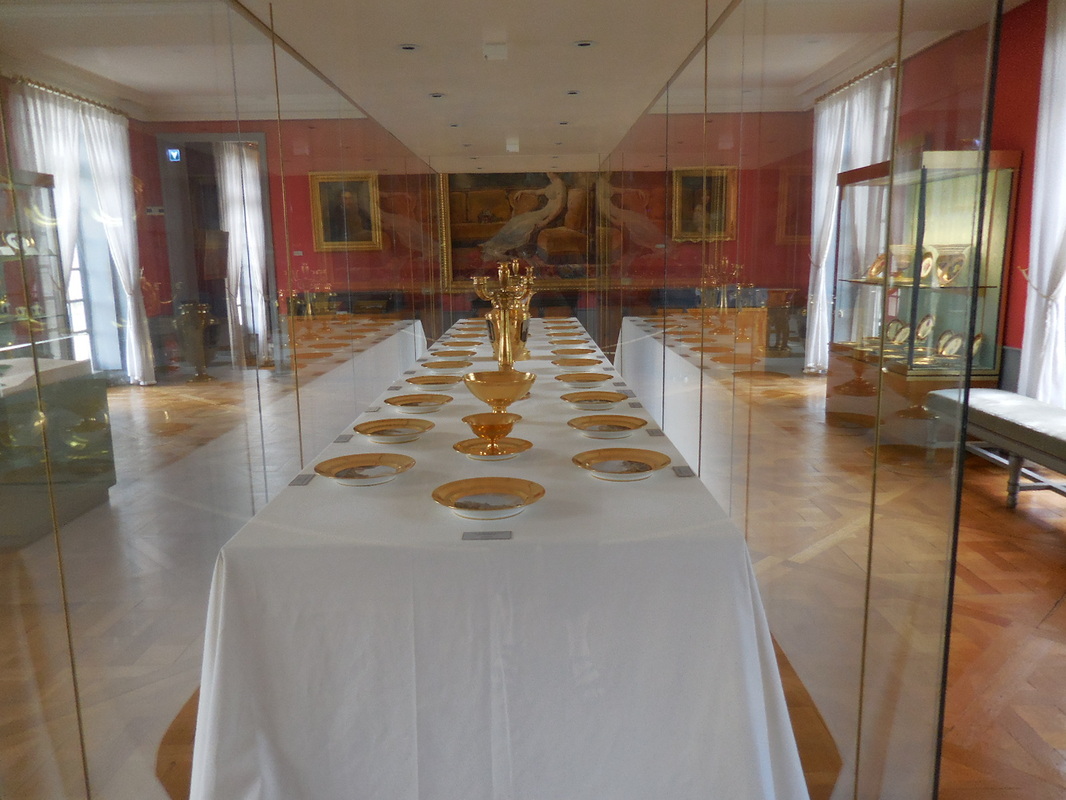
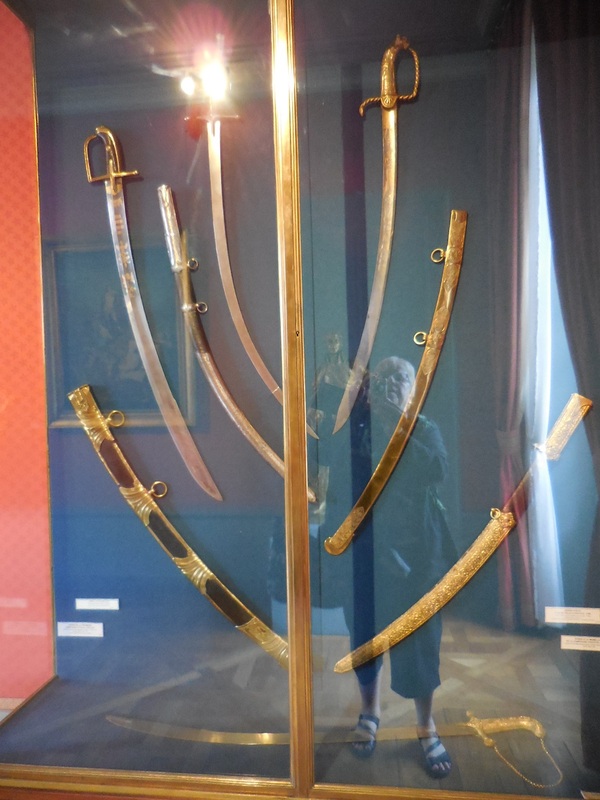

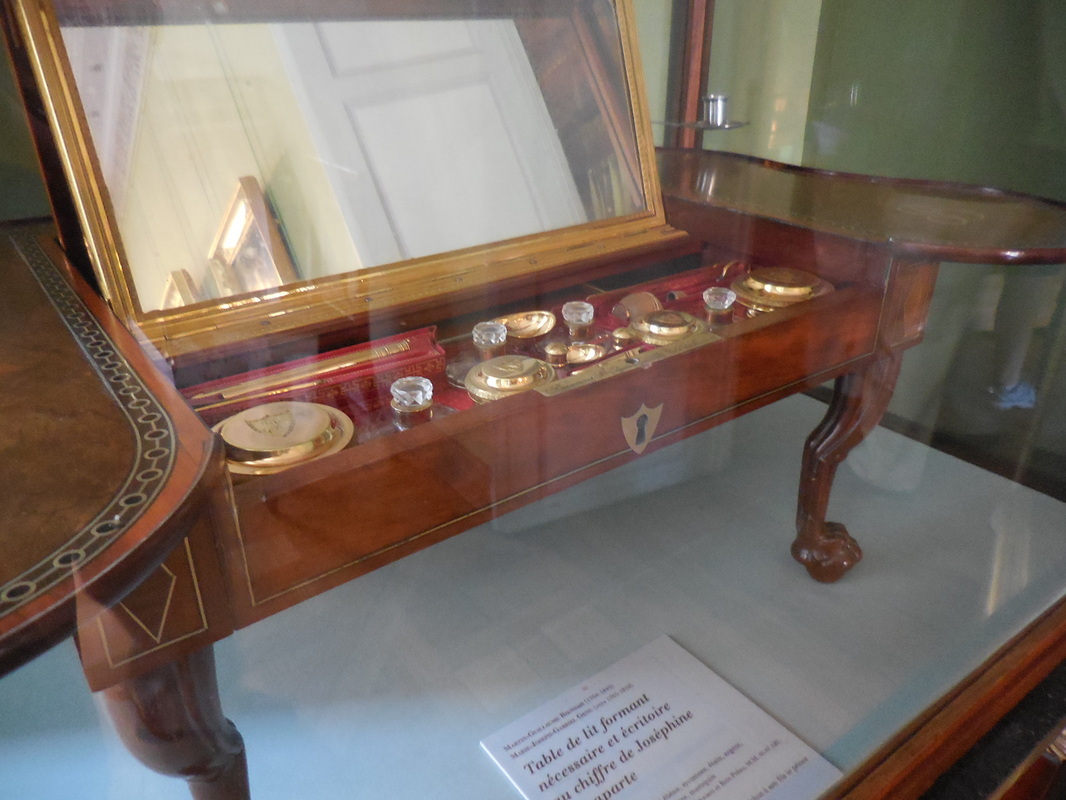
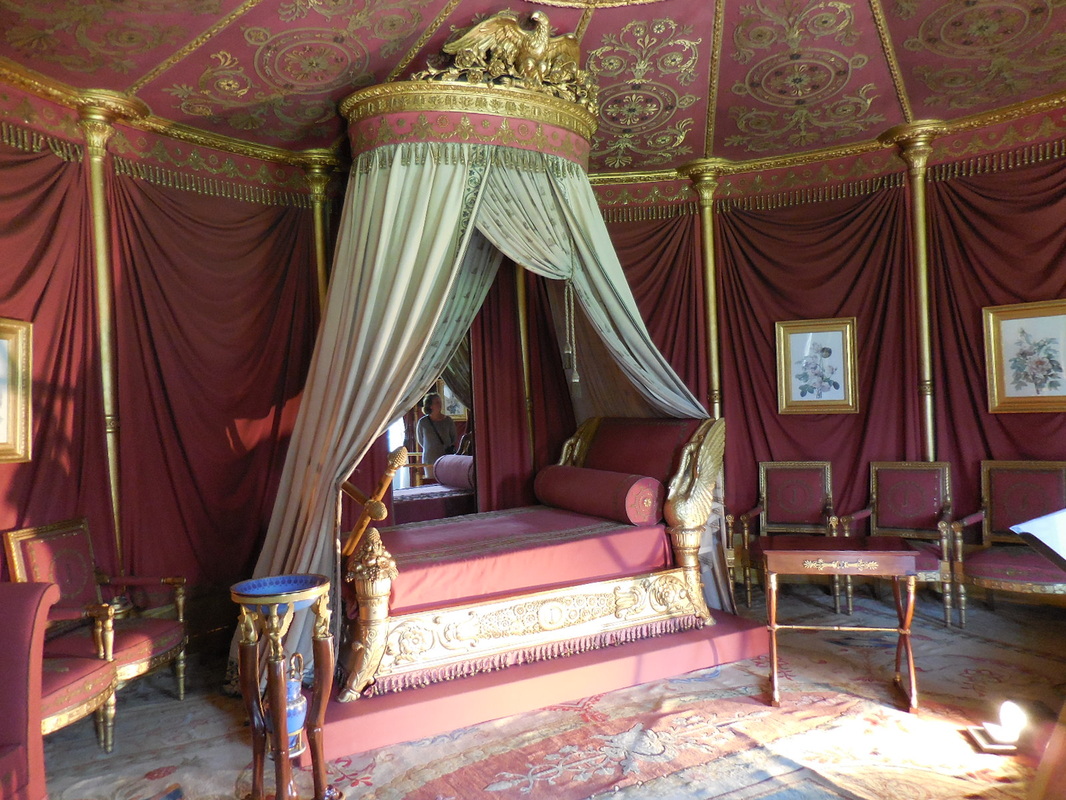

 RSS Feed
RSS Feed